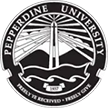When Japan’s new National Stadium was unveiled last month, visitors were greeted with several examples of oddly worded English on the signage there: “Hello, Our Stadium,” “Joho no Mori” and “Please Push the Under Button,” were but some of the phrases.
Given that the stadium is intended to put Japan’s best face forward to the world at the 2020 Tokyo Olympics and that more than a billion dollars was spent building it, you have to wonder why apparently so little thought was given to how the English signs would come across to native speakers.
It’s hardly unusual to find strangely worded or even unintelligible English on the signs, menus, websites and documents that make up Japan’s corporate world. The question is, in a country famous for tight quality control and attention to detail, where English is a compulsory subject at school and where many native speakers — ones who presumably could be consulted for even the quickest proofing — are within reach, why do so many organizations persist in using poor English? Who writes it, and how does it get approved for use?
The root of the confusion
I have a few theories as to what could be behind this phenomenon, which I’ll describe here. Of course, more than one of these could be true in any given situation.
One likely culprit is the use of machine translation rather than human translators. Anyone can put text into a free online translation program, while there are also proprietary versions marketed to companies for internal use. While the quality of machine translation has certainly improved compared with what it was in the past, it still often produces translations that are slightly unnatural at best and complete gibberish at worst. Thus, machine translation is generally better used to get the gist of something written in a foreign language, rather than for producing a polished translation to be printed or published. Too many organizations continue to blithely cut and paste whatever comes out, without thinking about whether the result is accurate or even makes sense.
Organizations that actually employ the services of a human translator will often use one who is unqualified or inexperienced. In many cases, this is someone who is pressed into service to translate as a favor, often for free. The common culprit at the root of using less-qualified individuals or software is a lack of budget allocated for translation. Unfortunately, preparing translated text is sometimes an afterthought.
Another way that some Japanese organizations save money on translation is to ask an employee to do it. There could be a linguistically confident Japanese employee who feels like they can handle the translation themselves or just gets saddled with the job because everyone knows their TOEIC score. In either case, this goes against the general rule in translation that people should only translate into their native language.
In other cases, the English may have been translated properly, perhaps even by a professional translator, only to then come across the desk of an employee who prides themselves on their English ability who thinks they can “improve” the text. It gets worse in the process, but pointing this out to the employee causes a loss of face. Those who have pride in their own English ability may also feel that getting it checked is unnecessary.
Another contributing factor is the Japanese concept of a “native check,” which is when a person proofreads text in their mother tongue. It’s a nice idea but its importance is not universally recognized. Some organizations may like the idea of a native check but making it happen seems like too much of a hassle. Perhaps they have no idea of where to find a native speaker to do it, or they may not have any budget for it. As a result of the lack of checking by native speakers, problems that could have been caught end up going uncorrected.
For a long time, English has been viewed more as decoration than as a communicative device, especially when it comes to advertising and packaging. In those situations, the English is often written in a way that is easy for Japanese people to understand (under the assumption that they are the primary audience), and is viewed as a priority over accuracy. The “Hello, Our Stadium” sign at the new National Stadium is likely an example of this phenomenon.
No longer lost in translation
To check these theories, I contacted members of the Society of Writers, Editors and Translators (SWET), a community of Japan-related writing professionals that was founded in Tokyo in 1980, and continues to be a vibrant group that promotes online and offline networking among wordsmiths and professional practices in their crafts.
The SWET members confirmed that they had witnessed all of the aforementioned factors at play when it came to bad translations, with pride being a particularly frequent one.
Sherry Miyasaka, a former medical translator and editor, also raised the issue of typos, pointing out that English content may be retyped during the formatting or printing process, which allows for errors to creep in. Allotting sufficient time for proofreading, she says, can make all the difference.
SWET members also pointed out factors that should be considered in order to ensure a good translation, ones that may not be given sufficient attention. Frank Walter, who oversees writing, translation and consultation projects for Export Japan, stresses the importance of context, and the need for the translator to have detailed knowledge of the text’s intended use.
Translator and editor Lynne E. Riggs says that the type of English needs to be appropriate for the situation.
“English comes in many different styles and registers; the client side has to learn what it needs for different situations: standard expository writing for permanent signage, informal, popular-register promotional writing for web ephemera, internationally recognizable wordings for site directions, and so on,” she says.
Philbert Ono, travel writer and photographer, adds that a potentially bigger issue than the quality of the English is the quantity of the English.
“Information in English is usually a translation of the Japanese, but often times the translation is truncated and incomplete,” Ono says. “In Japanese, the information can be very detailed, while in English, it is abbreviated. Foreigners are the ones who need the most information, but they usually receive the least amount of it.”
A model project
SWET members are among the dozens of Japan-based writers and editors currently involved in a project funded by the Japan Tourism Agency and managed by Toppan Printing Co. to improve the quality of signage, websites, pamphlets and audio guides for tourist destinations across the country, including temples, shrines, museums and national parks.
The scale of the project is huge — preparation of more than 3,000 texts (averaging 500 words each) in fiscal 2019 alone— and the project is to continue in fiscal 2020. A key feature of the approach is that the texts are being composed in English, based on research by the writers, and are undergoing thorough editing and copy editing processes, rather than being straight translations of existing Japanese signage.
The project has also involved development of a detailed writing and style manual that the group hopes could be used by or become a model for other organizations in Japan. The tourism-oriented guide is based on the “Japan Style Sheet,” which SWET made available online free of charge in 2018.
It’s impressive to hear about the substantial resources being devoted to preparing high-quality English materials at scale. As writer Susan Rogers Chikuba points out, “The manual prepared for the Japan Tourism Agency project and that agency’s commitment to letting qualified English editors have mandate on the ground are huge steps in the right direction.”
Here’s hoping that other organizations in Japan will learn from this effort, and that we’ll see fewer problematic English signs and documents as a result.
Source: The Japan Times


No matter what your needs may be, we can and are ready to assist you now. We have translators and interpreters standing by 24/7.

CIT's interpreter is such a rockstar, and it’s so great to have him as a lead interpreter for our Board meetings. About Our Interpreters 
Thank you for always being able to handle emergency interpreting assignments with ease. About Urgent Requests 
Thank you for always being able to handle emergency interpreting assignments with ease. About Urgent Requests 
Your translation rates are more competitive than other language service providers I used in the past. About Pricing 

Professionalism matters at CIT. We respond to request inside 24 hours.







